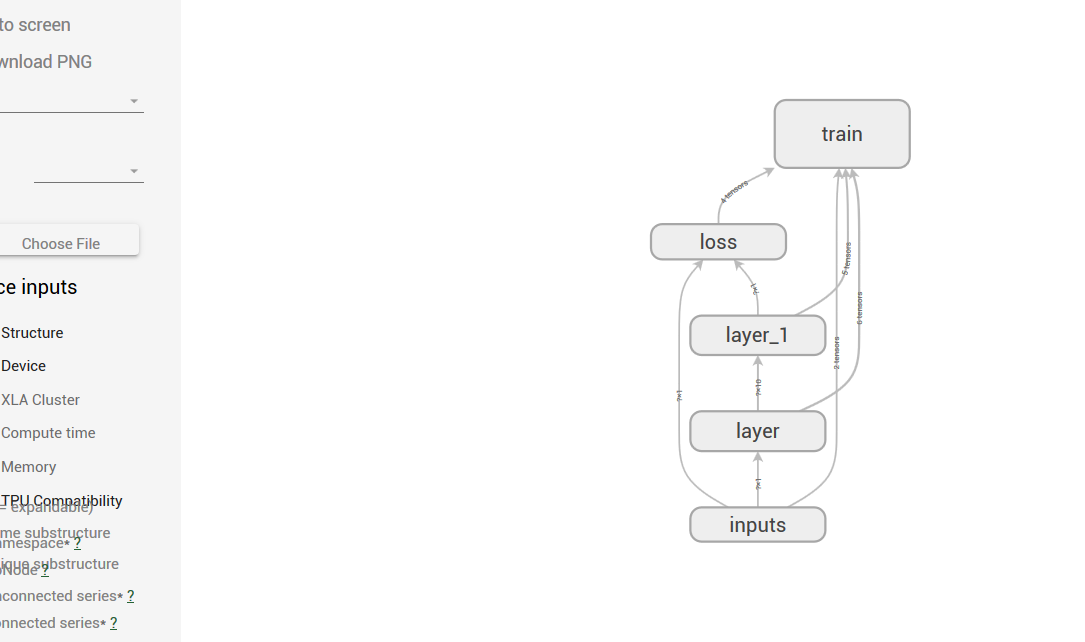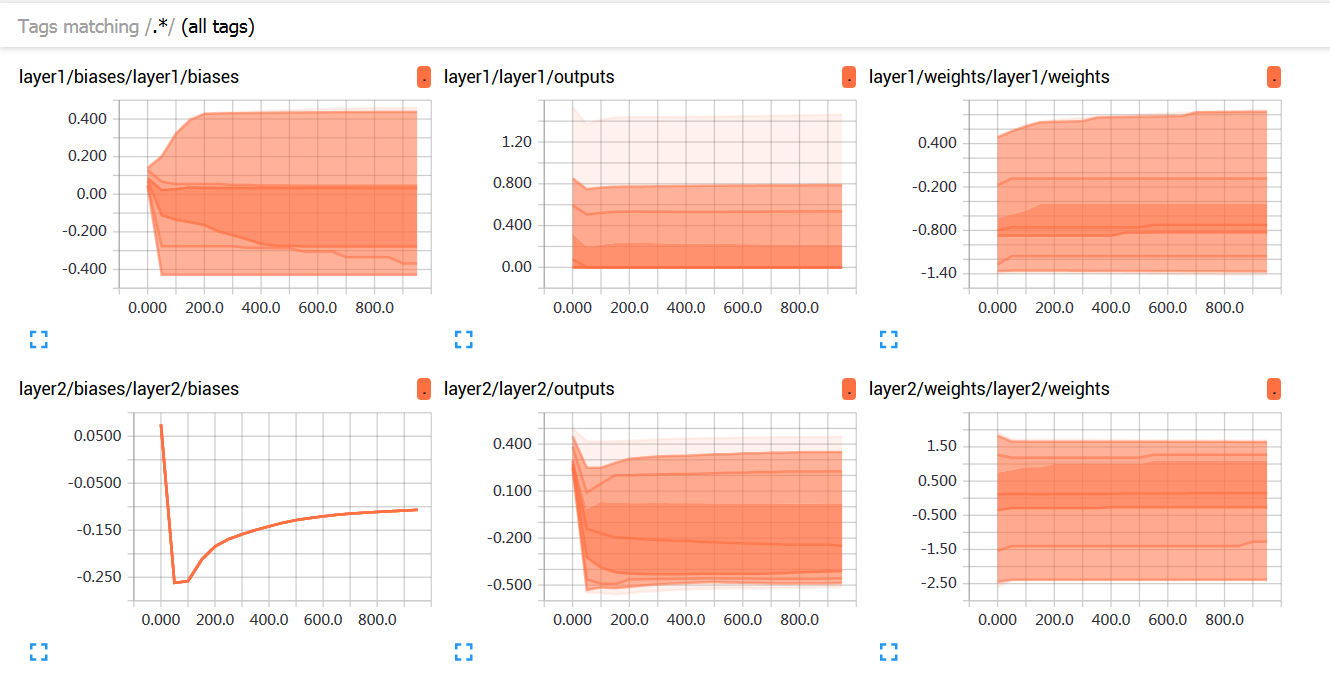参考: http://blog.csdn.net/l18930738887/article/details/55000008
http://www.jianshu.com/p/19bb60b52dad
http://blog.csdn.net/sinat_33761963/article/details/62433234
import tensorflow as tf import numpy as np def add_layer(inputs, in_size, out_size, n_layer, activation_function=None): # add one more layer and return the output of this layer layer_name = 'layer%s' % n_layer with tf.name_scope(layer_name): with tf.name_scope('weights'): Weights = tf.Variable(tf.random_normal([in_size, out_size]), name='W') tf.summary.histogram(layer_name + '/weights', Weights) with tf.name_scope('biases'): biases = tf.Variable(tf.zeros([1, out_size]) + 0.1, name='b') tf.summary.histogram(layer_name + '/biases', biases) with tf.name_scope('Wx_plus_b'): Wx_plus_b = tf.add(tf.matmul(inputs, Weights), biases) if activation_function is None: outputs = Wx_plus_b else: outputs = activation_function(Wx_plus_b, ) tf.summary.histogram(layer_name + '/outputs', outputs) return outputs # Make up some real data x_data = np.linspace(-1,1,300)[:, np.newaxis] noise = np.random.normal(0, 0.05, x_data.shape) y_data = np.square(x_data) - 0.5 + noise # define placeholder for inputs to network with tf.name_scope('inputs'): xs = tf.placeholder(tf.float32, [None, 1],name='input_x') ys = tf.placeholder(tf.float32, [None, 1],name='input_y') # add hidden layer l1 = add_layer(xs, 1, 10, n_layer=1, activation_function=tf.nn.relu) # add output layer prediction = add_layer(l1, 10, 1, n_layer=2, activation_function=None) # the error between prediciton and real data with tf.name_scope('loss'): loss = tf.reduce_mean(tf.reduce_sum(tf.square(ys - prediction), reduction_indices=[1])) tf.summary.scalar('loss', loss) with tf.name_scope('train'): train_step = tf.train.GradientDescentOptimizer(0.1).minimize(loss) sess = tf.Session() merged = tf.summary.merge_all() # save the logs writer = tf.summary.FileWriter("logs/", sess.graph) sess.run(tf.global_variables_initializer()) for i in range(1000): # training sess.run(train_step, feed_dict={xs: x_data, ys: y_data}) if i % 50 == 0: # to see the step improvement result = sess.run(merged, feed_dict={xs: x_data, ys: y_data}) writer.add_summary(result, i)
到运行python的所在目录下,打一下命令:
$ tensorboard --logdir="logs/"
再在网页中输入链接:127.0.1.1:6006 即可获得展示: 推荐使用friefox浏览器,我电脑上chrom浏览器打不开



比如,从他人处获得一个Graph,想看看它的结构,怎么弄?
Google提供了一个工具,TensorBoard,它能以图表的方式分析你在训练过程中汇总的各种数据,其中包括Graph结构。
所以我们可以简单的写几行Pyhton,加载Graph,只在logdir里,输出Graph结构数据,并可以查看其图结构。
可参考:http://www.tensorfly.cn/tfdoc/how_tos/summaries_and_tensorboard.html
https://www.tensorflow.org/get_started/summaries_and_tensorboard
代码如下:
import tensorflow as tf from tensorflow.python.platform import gfile # 这是从二进制格式的pb文件加载模型 graph = tf.get_default_graph() graphdef = graph.as_graph_def() graphdef.ParseFromString(gfile.FastGFile("/data/TensorFlowAndroidMNIST/app/src/main/expert-graph.pb", "rb").read()) _ = tf.import_graph_def(graphdef, name="")
import tensorflow as tf from tensorflow.python.platform import gfile #这是从文件格式的meta文件加载模型 graph = tf.get_default_graph() graphdef = graph.as_graph_def() # graphdef.ParseFromString(gfile.FastGFile("/data/TensorFlowAndroidMNIST/app/src/main/expert-graph.pb", "rb").read()) # _ = tf.import_graph_def(graphdef, name="") _ = tf.train.import_meta_graph("./InsightFace_iter_best_1950000.ckpt.meta") summary_write = tf.summary.FileWriter("./" , graph)
然后再启动tensorboard:
tensorboard --logdir /data/TensorFlowAndroidMNIST/logdir --host 你的ip --port 你端口(默认6006)
一个打开pb文件的实例
import tensorflow as tf from tensorflow.python.platform import gfile graph = tf.get_default_graph() graphdef = graph.as_graph_def() graphdef.ParseFromString(gfile.FastGFile("./log/mtcnn.pb", "rb").read()) _ = tf.import_graph_def(graphdef, name="") summary_write = tf.summary.FileWriter("./log" , graph)